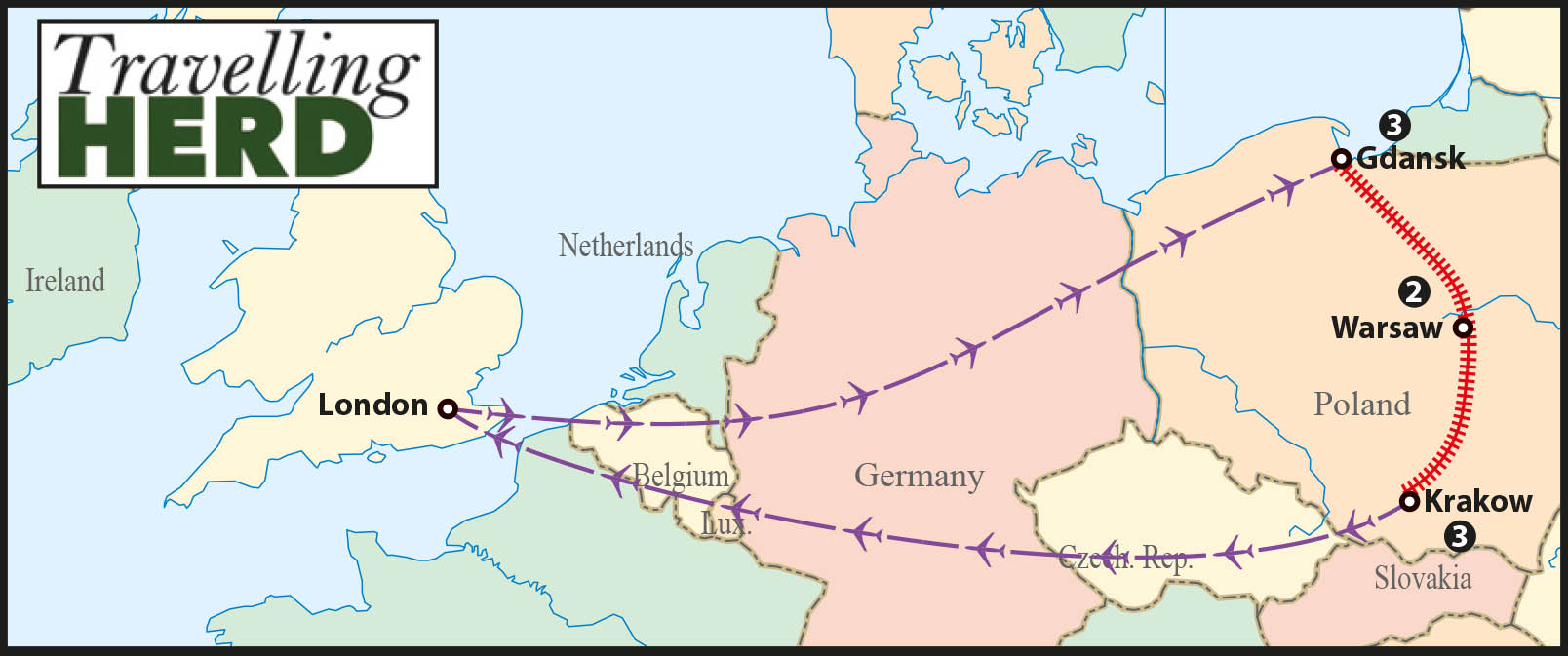Wednesday 1st February 2023
We planned our walking route to the Europejskie Centrum Solidarności [European Solidarity Centre], taking in some of the ‘must see’ sights of the city. This included the Golden Gate which formed part of the old city fortifications and was the inland entrance to the Trakt Królewski or royal route of Gdańsk.
Almost 90% of the city was destroyed in WWII and when the Polish came to rebuild, there was understandably some fairly strong anti-German feeling: the people did not want to spend money and effort on recreating old-style Germanic architecture. Instead, other European influences were drawn on, in particular the Flemish-Dutch connection from the time of the Hanseatic League and much of the old town now features traditional Dutch style gables.
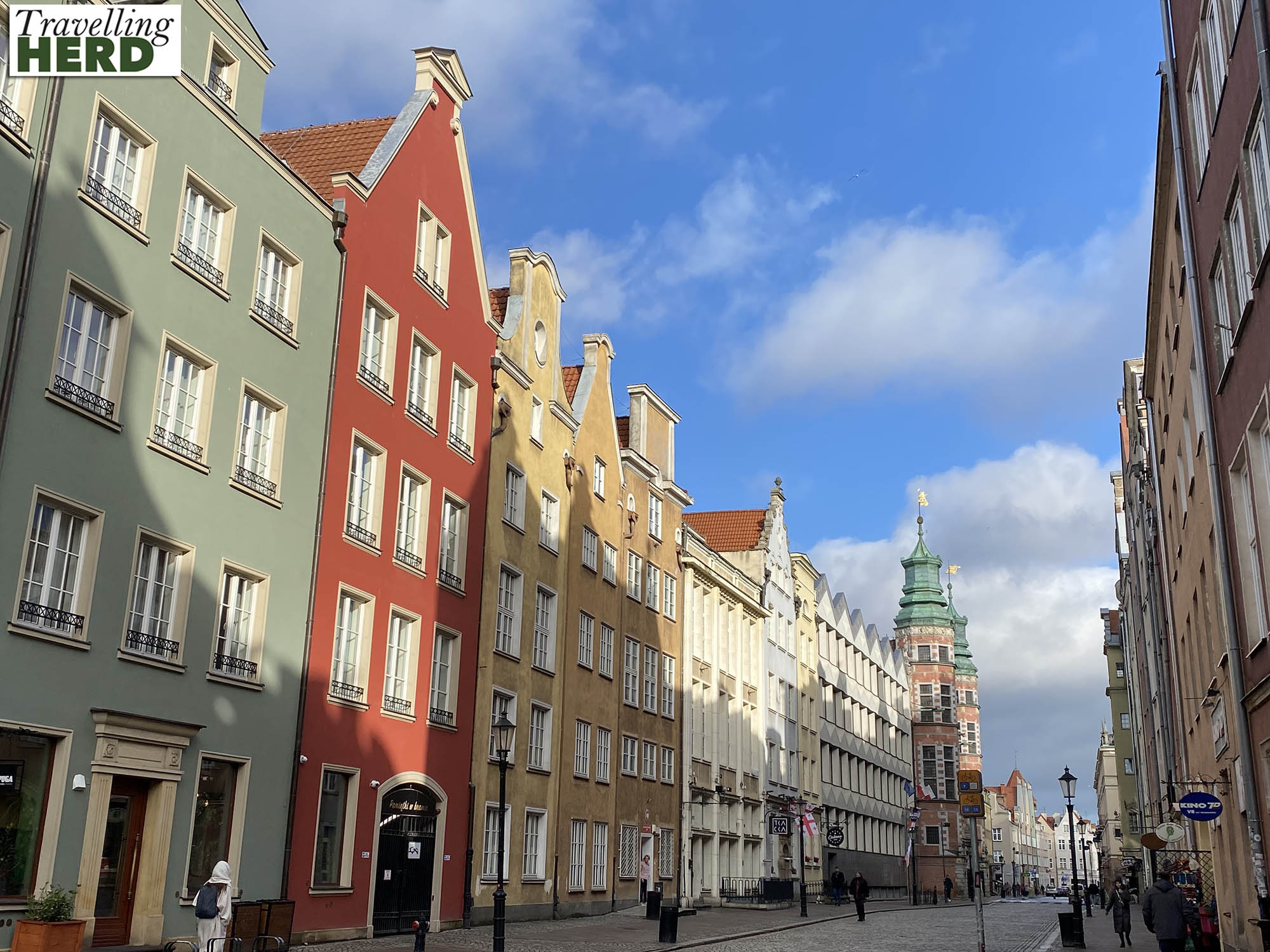
The Targ Węglowy or the Prison Tower complex was originally part of the Ulica Długa Gate and was built as part of the medieval city fortifications. The tower was added to several times to make it taller and, presumably, more imposing but when new fortifications were built between 1571 and 1576, it no longer formed part of the city’s defences and the smaller building was used as a courthouse and torture chamber while the tower was used as a prison.
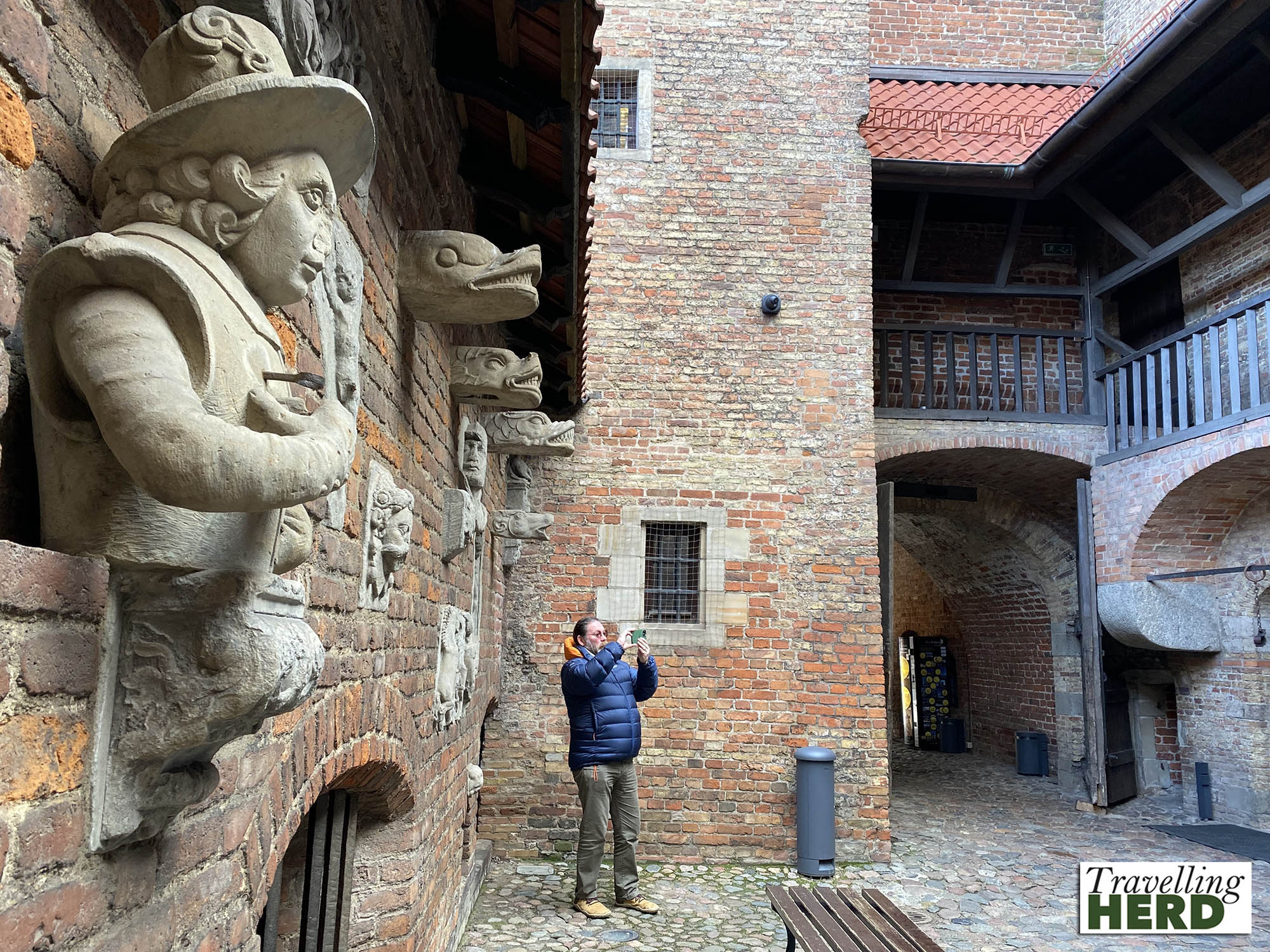
Manacles hang from suspended metals bars and serve as a stark reminder of the brutal past of this building and that the ‘justice’ system of the time was inextricably linked with torture.

The Prison Tower used to house the city’s Muzeum Bursztynu or Amber Museum but this has now been moved to the Great Mill.
The Great Mill dates from 1391 and was built by Teutonic Knights to replace an earlier building which burnt down. Over the centuries the Great Mill underwent several modernisations including an upgrade to include 18 water-wheels, each five metres in diameter, and then, in 1880, the installation of steam turbines.
The mill operated continuously right up until its near total destruction in 1945 when just one gable end survived. The building has subsequently been restored and since 2016 has been home to the city’s impressive Muzeum Bursztynu [Amber Museum].
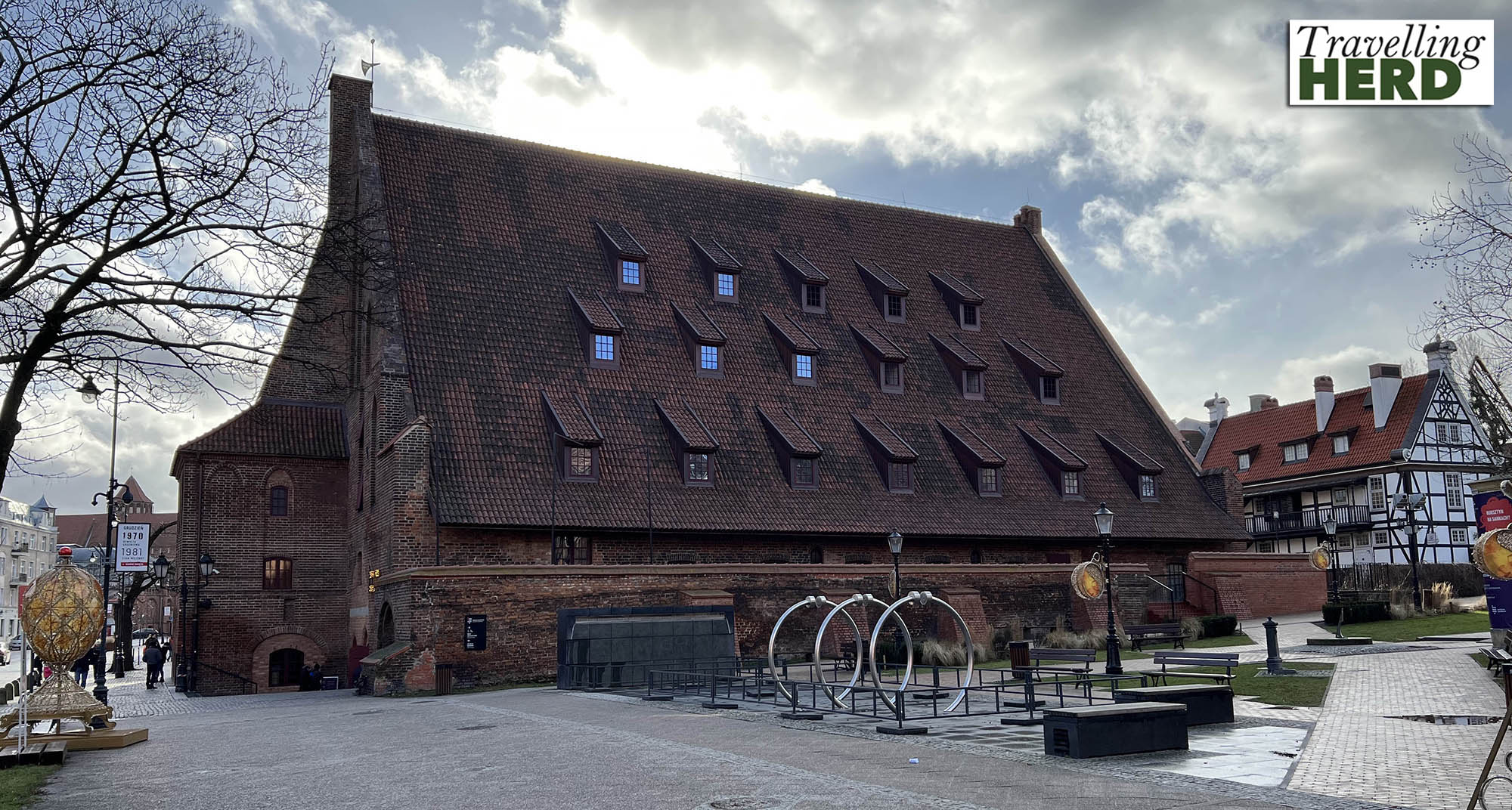
Matilda found entering the museum rather disconcerting at first. She wears varifocal glasses and finds dimly lit spiral staircases in castles a bit of a challenge. Here, the floor is incredibly highly polished so that the reflection of the ceiling makes it appear as though you are looking through the floor to the level below.
The museum itself is fascinating and provides a very detailed explanation of the various prehistoric eras of the Earth as well as the process by which amber was produced and then spread through glacial movement.
Amber is the fossilised resin from an unidentified species of conifer tree and there are several sections where you can select the number of a sample on display to see an enlarged image of the insect or life-form which was trapped inside the resin as the amber was forming.
Working amber was a skilled profession and the artefacts that have been made are intricate and beautiful, although some no longer seem to match current tastes. One was made for Stalin and when he died it was returned to the city [see below right]. We thought we would have returned it too.
The item known as the Queen’s Crown, reminiscent of a crown of thorns, however was both delicate and striking.
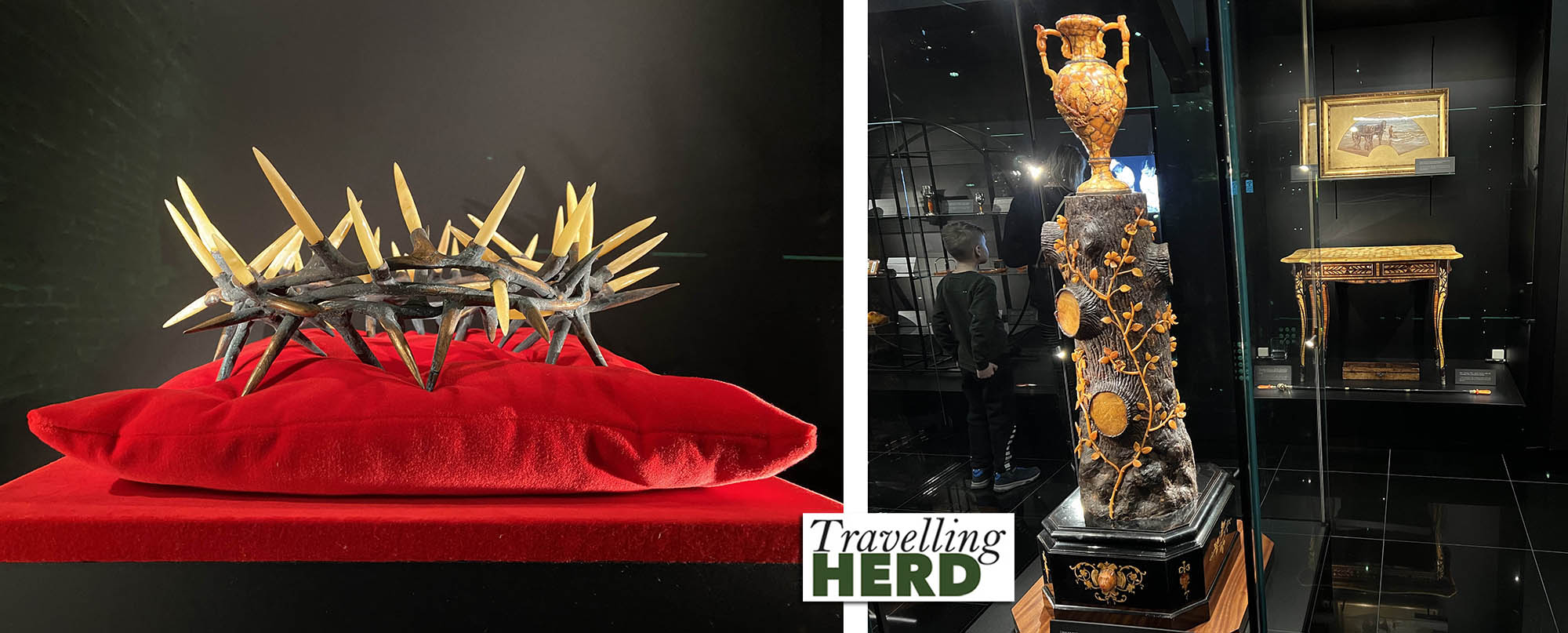
After enjoying the Amber Museum we made our way towards the Europejskie Centrum Solidarności [European Solidarity Centre] as this had always been high on our list of the things we wanted to see here. We passed Lech Wałęsa’s Wall [below right] – a piece of the old shipyard wall which he climbed over to join the striking workers. A sister segment can be found in Berlin and a small section of the Berlin Wall has been installed alongside it to commemorate Poland’s contribution to German re-unification.
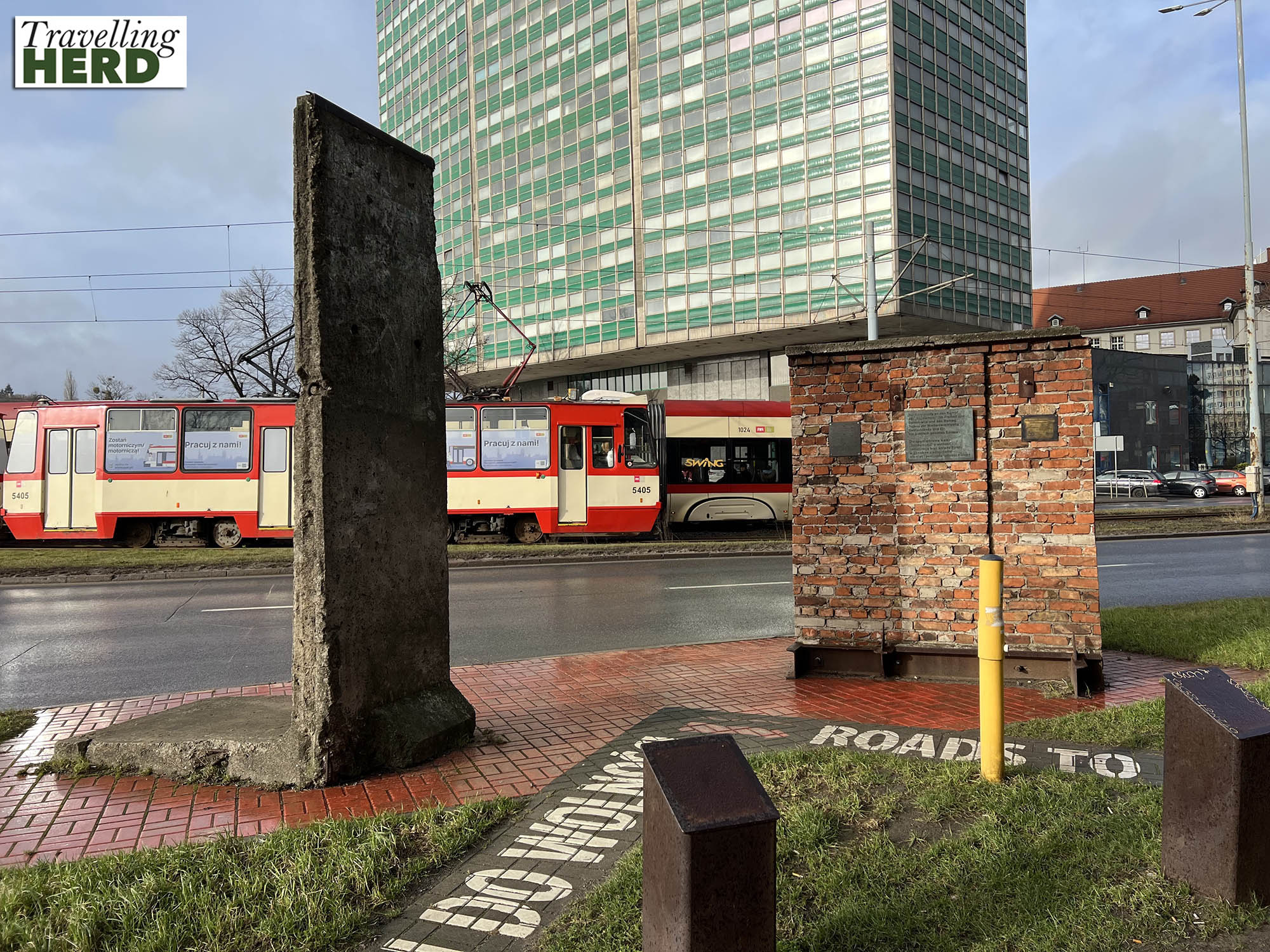
We also passed the current Solidarność HQ.

Just outside the shipyard is the Pomnik Poległych Stoczniowców 1970 [Monument to the Fallen Shipyard Workers 1970]. This is the first monument to the victims of communist oppression to be erected in a communist country.
The statue of a worker [below right] looks up at three soaring columns – each surmounted by a cross weighing 36 tons and measuring 42 meters in height – one meter for each of the shipyard workers who died. Suspended from each cross is an anchor weighing about two tons – the anchors are symbols of hope but their positioning is reminiscent of a crucifix and therefore resonates with a sense of individual sacrifice.
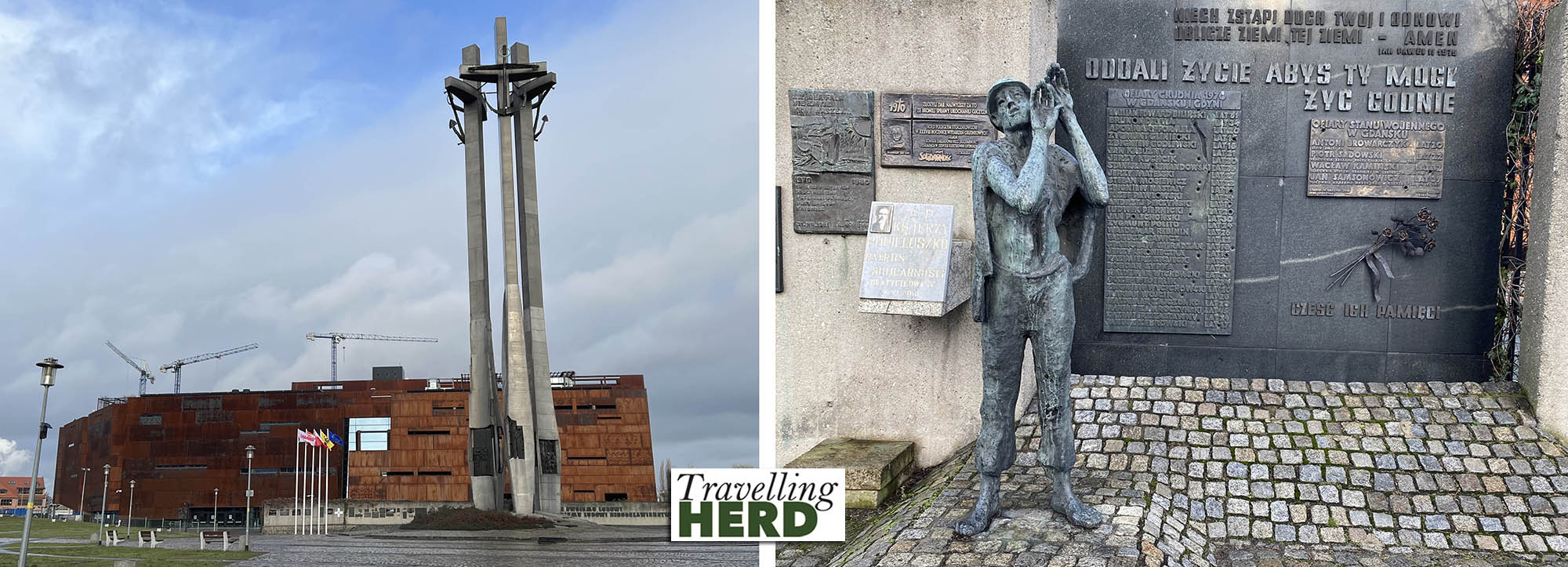
The museum building itself is the colour of rusted metal with porthole windows in places and the design is intended to remind visitors of the vast vessels built at the shipyard.

Inside the walls rise and curve upwards like the contoured hull of a ship.
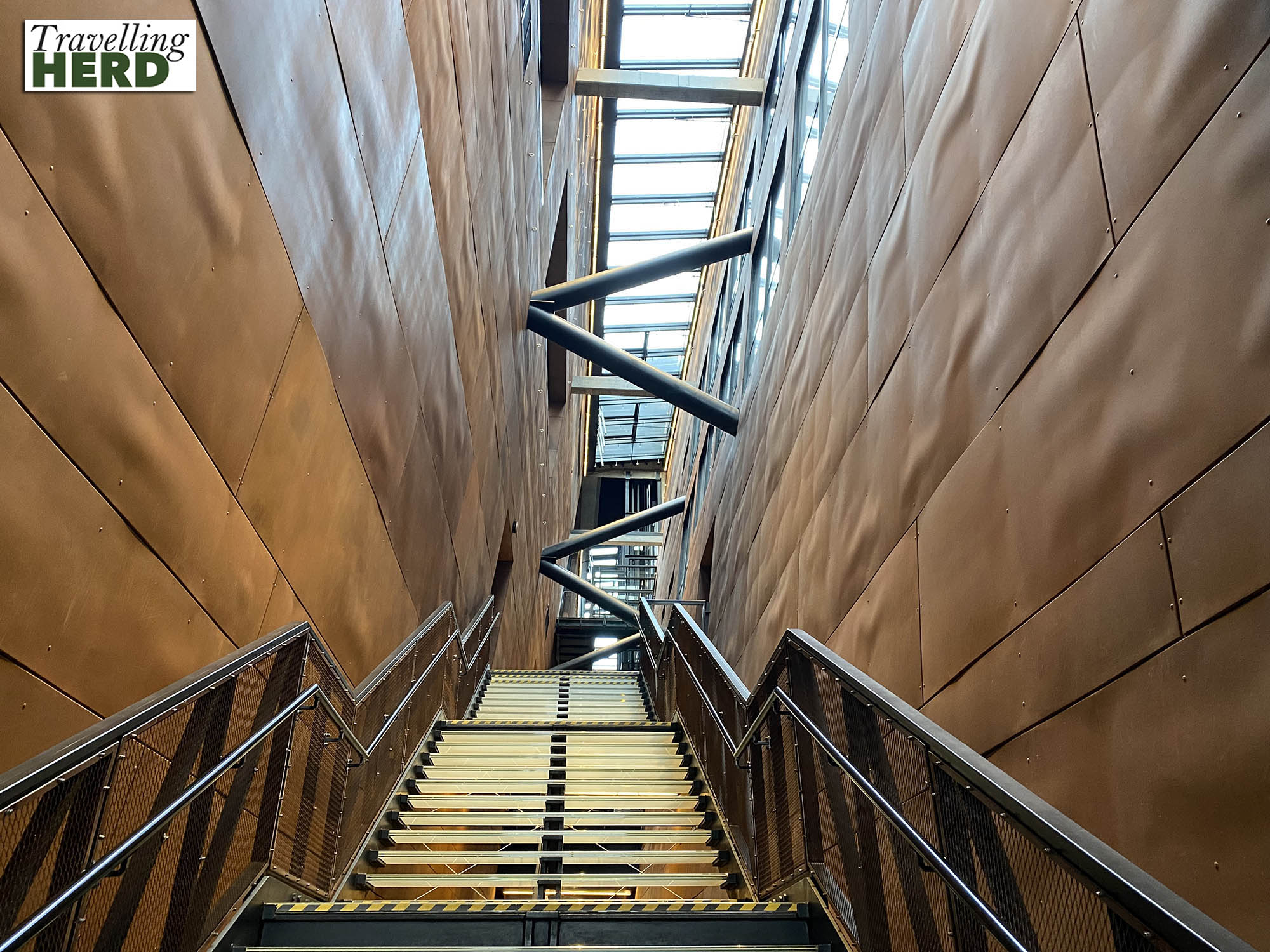
The audio guide is included in the price and even though we lived through these events, we learnt so much, although sometimes we felt that we needed more time to read some of the exhibits and afterwards we found we had both missed items the other had noticed.
One of the exhibits is the Popemobile which Pope Jean Paul II used on his visits to Poland. Whilst we did remember the exhilaration and hope that the Solidarity movement engendered in Western Europe, we had not remembered how long the struggle had lasted nor that the Pope had visited his countrymen three times during the 1980s and had been so quietly determined to support them through this period of peaceful rebellion.

At the start of the protest, on 16 August 1980, the Międzyzakładowy Komitet Strajkowy, [MKS] or Inter-Factory Strike Committee was formed in the Lenin Shipyard in Gdańsk.
The MKS issued 21 demands on the 17th of August 1980 and these were written on two boards and hung on the entrance gate to the Lenin Shipyard. These demands eventually led to the Gdansk Agreement and the creation of the Solidarity Union.
To mark the first anniversary of the August strikes, the demands were put on display in the Gdańsk’s Maritime Museum. The day after Martial Law was declared one museum worker hid them in his loft, where they remained forgotten until 1996.
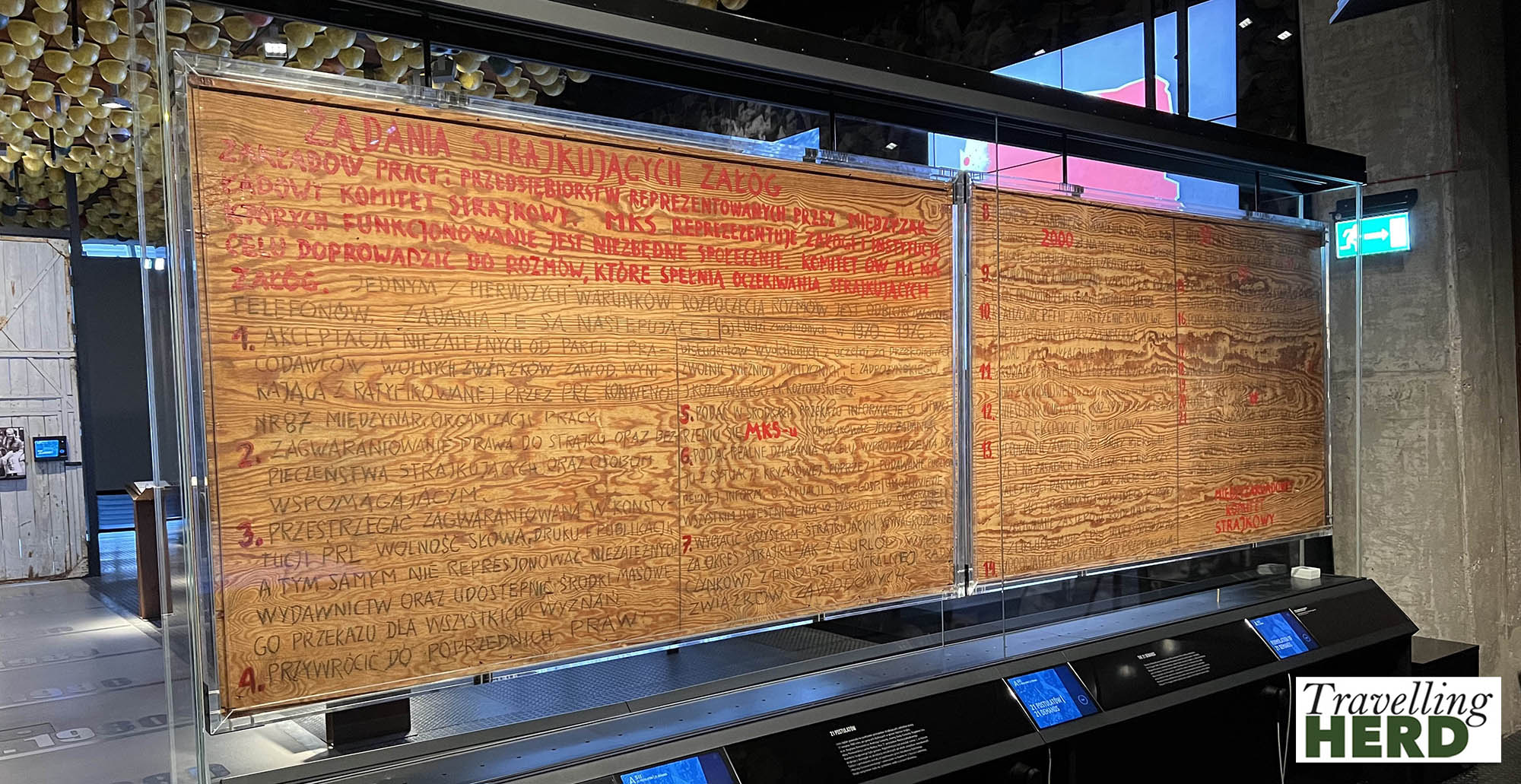
In the 1989 elections in Poland under communist rule a proportion of the seats were freely contested. Solidarity mounted a co-ordinated and well-planned campaign against a ruling party which was not used to having to promote or justify itself. Fearing that the names of Solidarity candidates would not be familiar to voters in the individual constituencies, flyers were printed for each one featuring a photo of them with Lech Wałęsa.
These are all on display in a room where you are invited to sit round a negotiating table and listen to recordings of the various candidates.
Solidarity won every seat which they contested in this election.
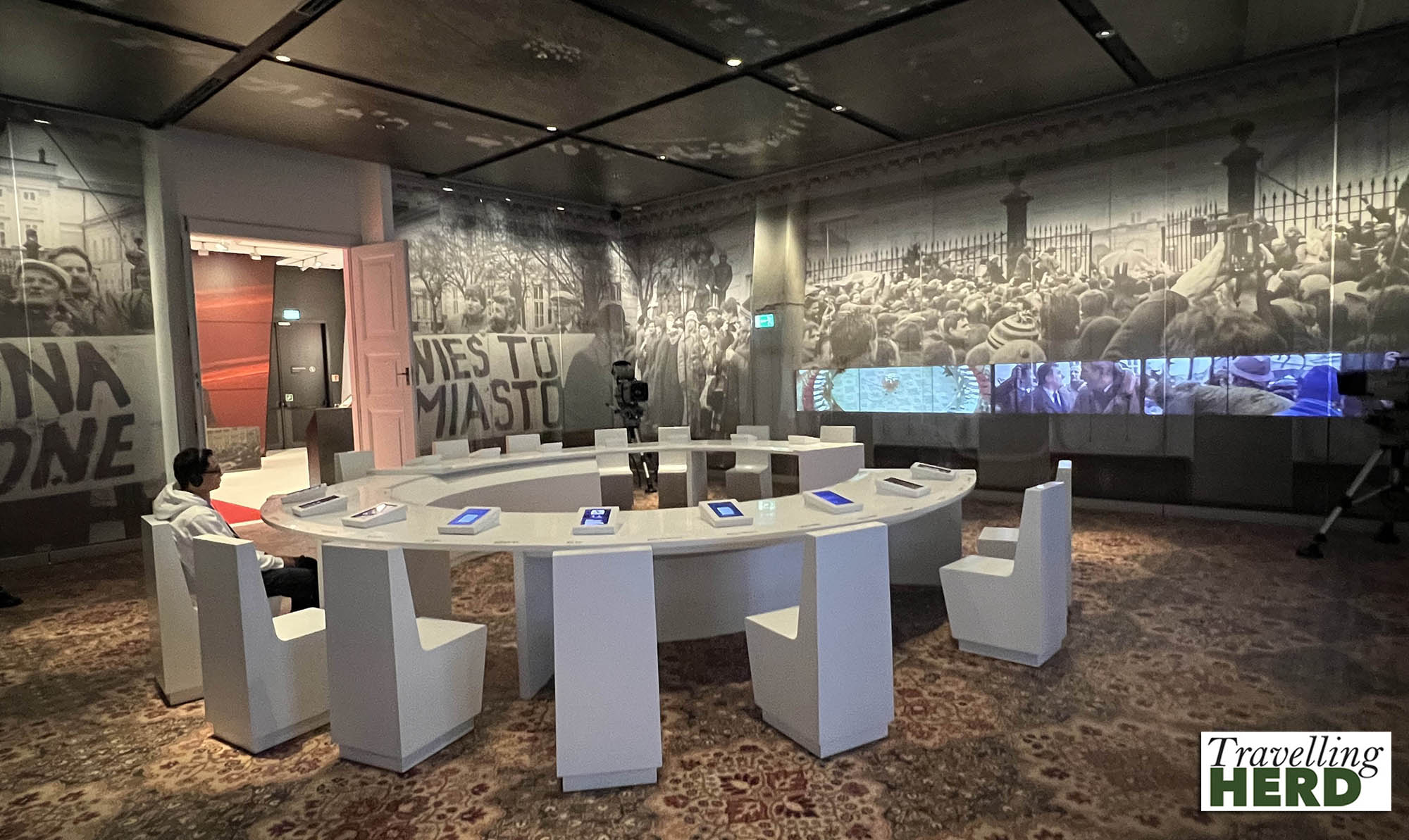
In 1989, the year of these elections and the year that we met, Matilda went to a conference in Berlin on behalf of a client, Alcatel, which was sponsoring the forthcoming Barcelona Olympics at the time. She was able to go through the Brandenburg Gate and walk into East Berlin; the wall was being demolished to either side and people were offering chunks of the wall for sale to tourists. This was only possible because of Poland’s determined protest against the oppressions of communism and the subsequent disintegration of the USSR and reunification of Germany.
In one part of the display you are invited to look up to see that the exhibits are laid out with shaped boards which spell out the name Solidarność.
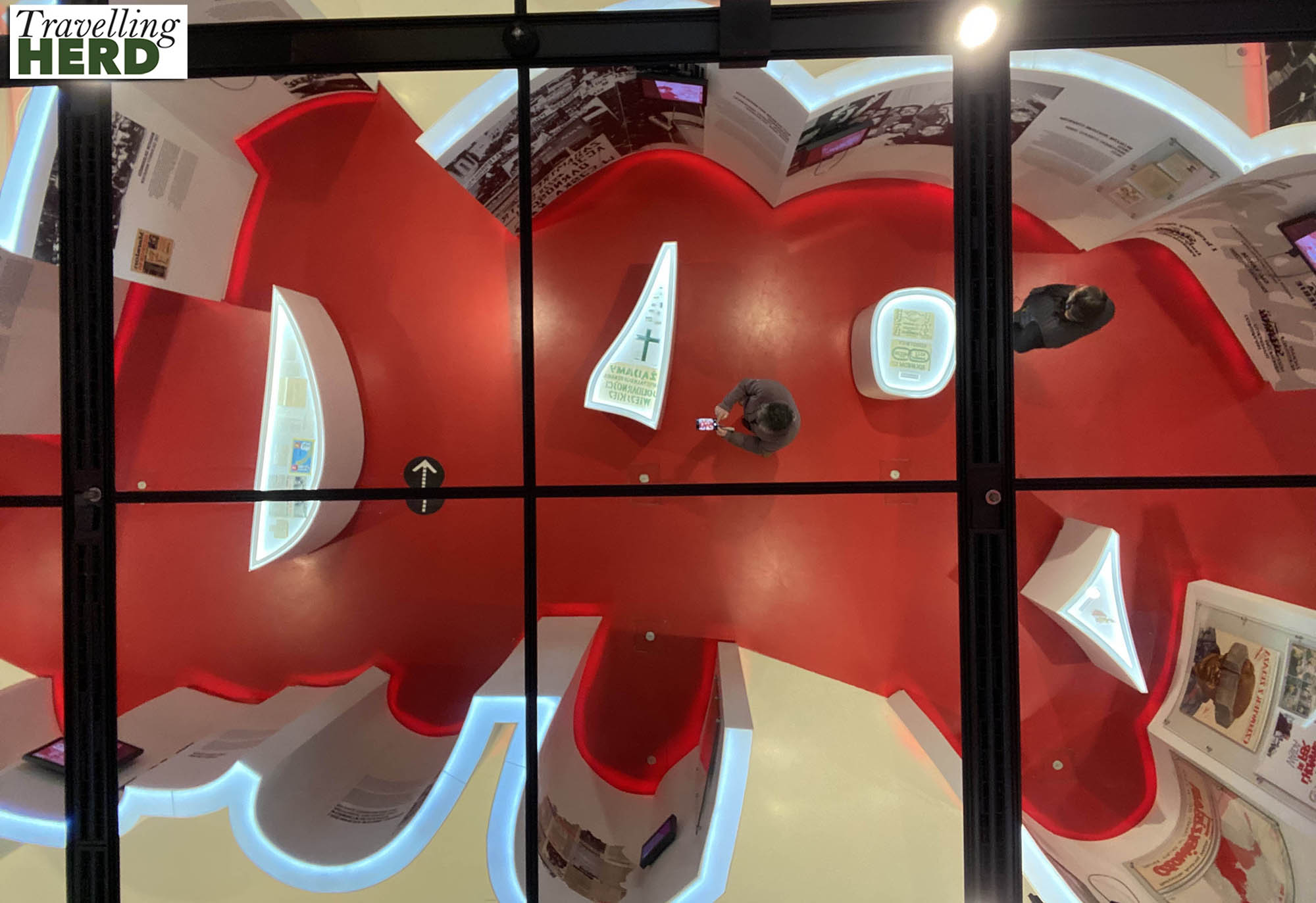
There is also a wall made up of rows and rows of cards on pegs where visitors are invited to write comments and hang them on the wall. To the far left, the red cards trace out an increasing heart rate as the dates approach the time of the 1980 strikes and then spell out the word Solidarność.
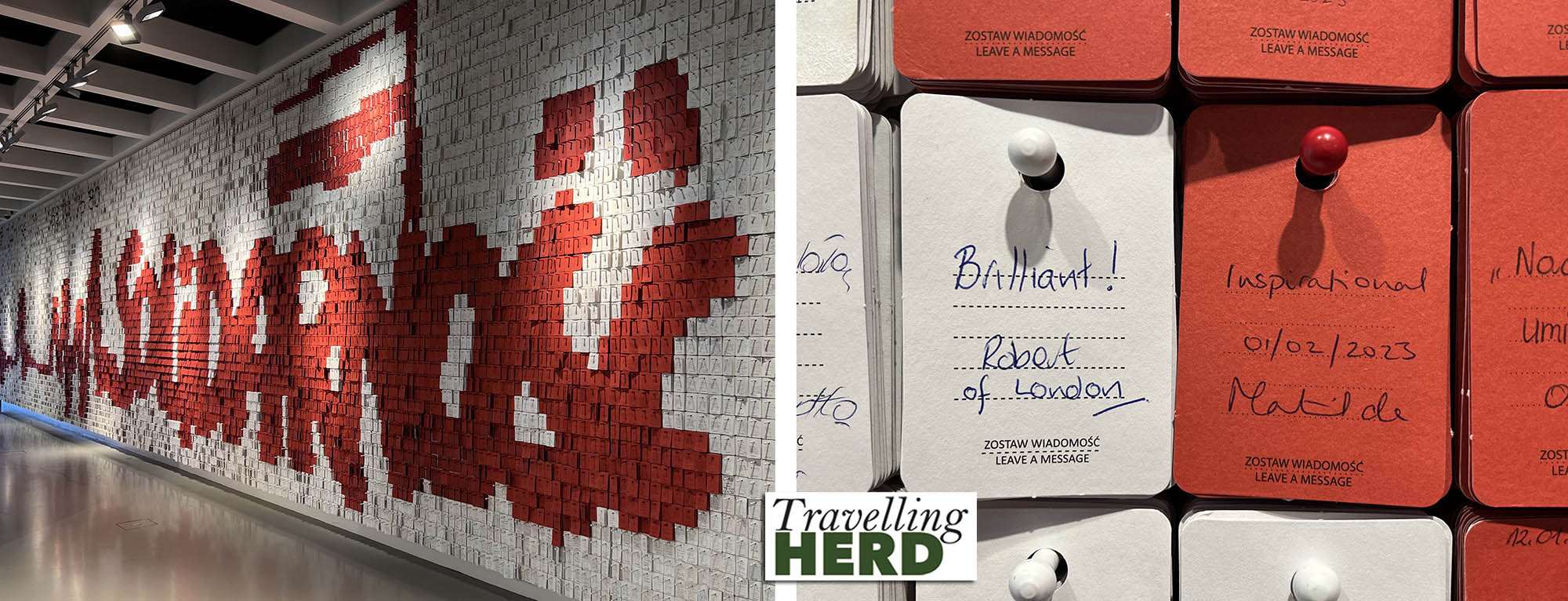
If you are ever in Gdańsk, we recommend you visit.
Afterwards, and quite by chance, we came across three of the bronze statues of lions in Gdańsk. We remembered following a similar trail of gnomes in Wrocław which were installed in 2005 to represent a protest movement from the 1980s that used humour and satire to oppose the communist regime at the time.
The Gdańsk Tourist Board commissioned local artist Tomasz Radziewicz to create the lion statues. Why lions? In the fifteenth century the King of Poland granted the city of Gdańsk the right to include the royal crown and two crosses in its coat of arms. Two lions have been holding the coat of arms ever since. They feature in the decorated facades of important buildings such as the Green Gate and the Armoury. A public vote was held to name this little character and he is now known as Hewelion.
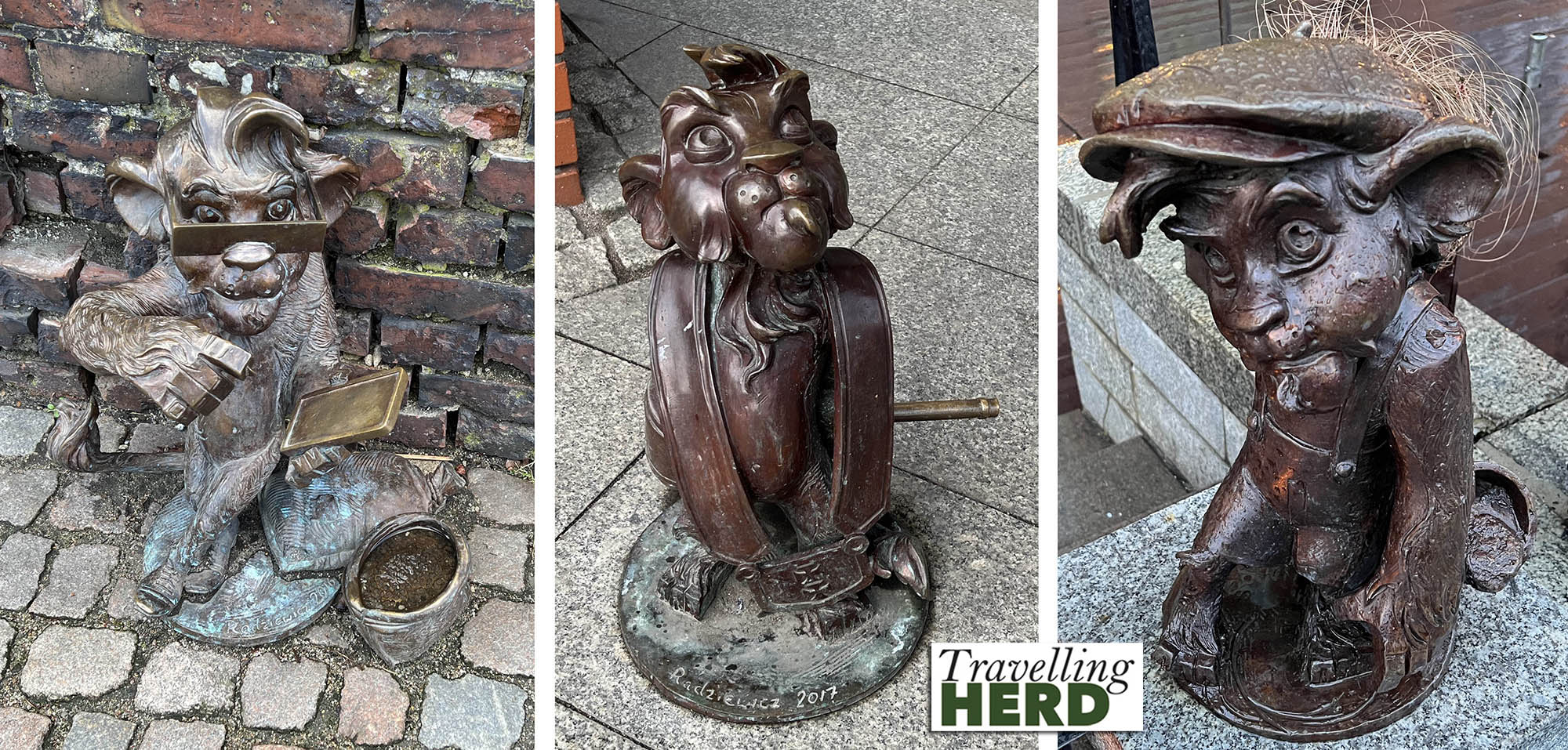
We retraced our steps along Ulica Mariacka which is a fine example of the type of house which was would have been typical in Gdańsk: the houses have terraced entrances and narrow, richly decorated facades. This is where many of the amber shops can be found and the gargoyles, colloquially known as ‘spitters’ for obvious reasons are at street level [see Video of the Day].
We found Gdański Bowke, a riverside restaurant, for our evening meal and although Robert declared his wild boar with blackberries to be delicious he was so hungry that he forgot to take a photo so it is not featured as Dish of the day though perhaps it should have been. The deciding factor was that Matilda remembered to take a photograph of her breakfast.
Here, we were served by Darek [Darius], who was both charming, helpful and the right age to have turned 18 just in time to vote when the first democratic elections were held in Poland and Lech Wałęsa was elected president. We felt he was a piece of living Polish history.

Video of the day:
Selfie of the day:
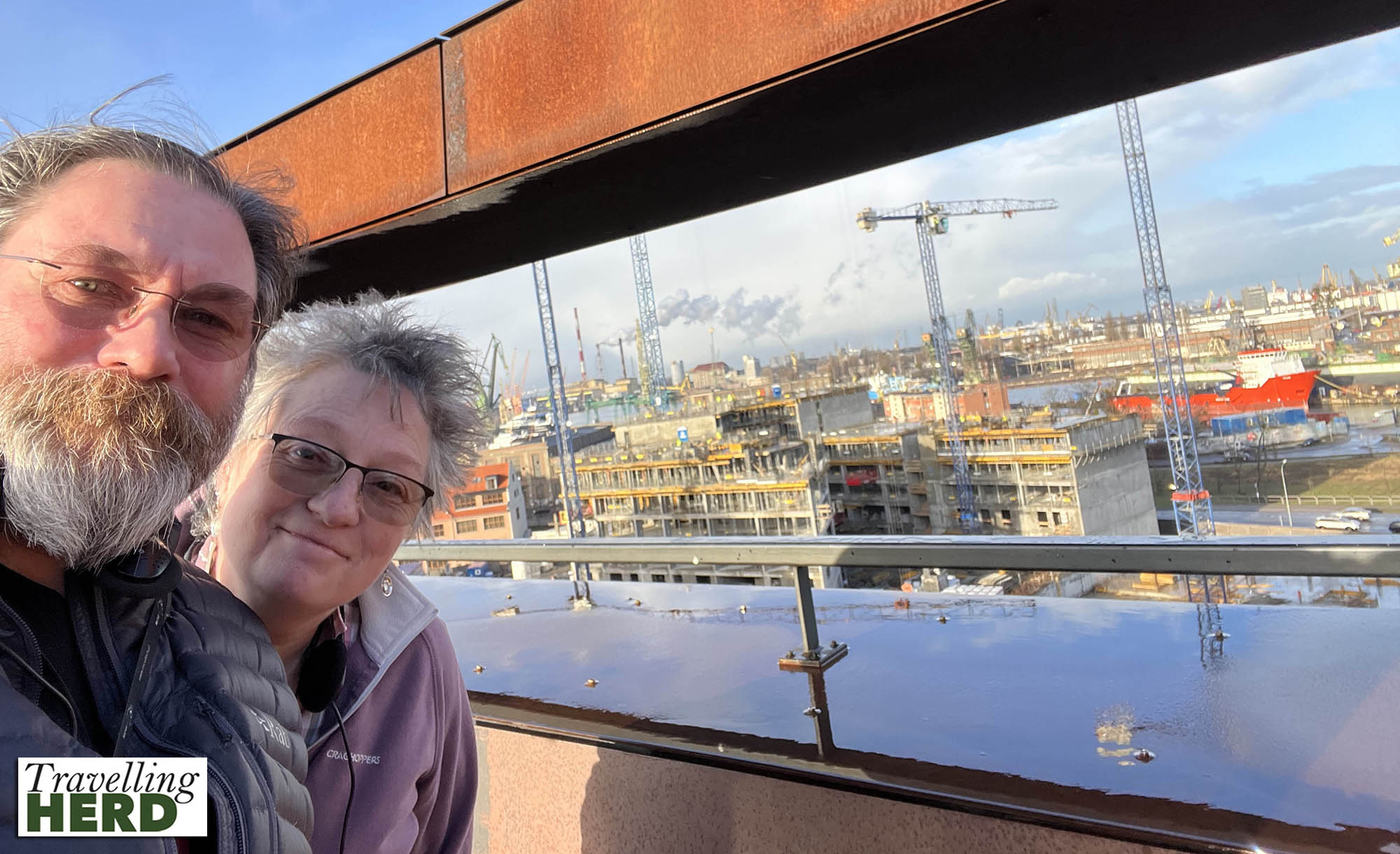
Dish of the day:
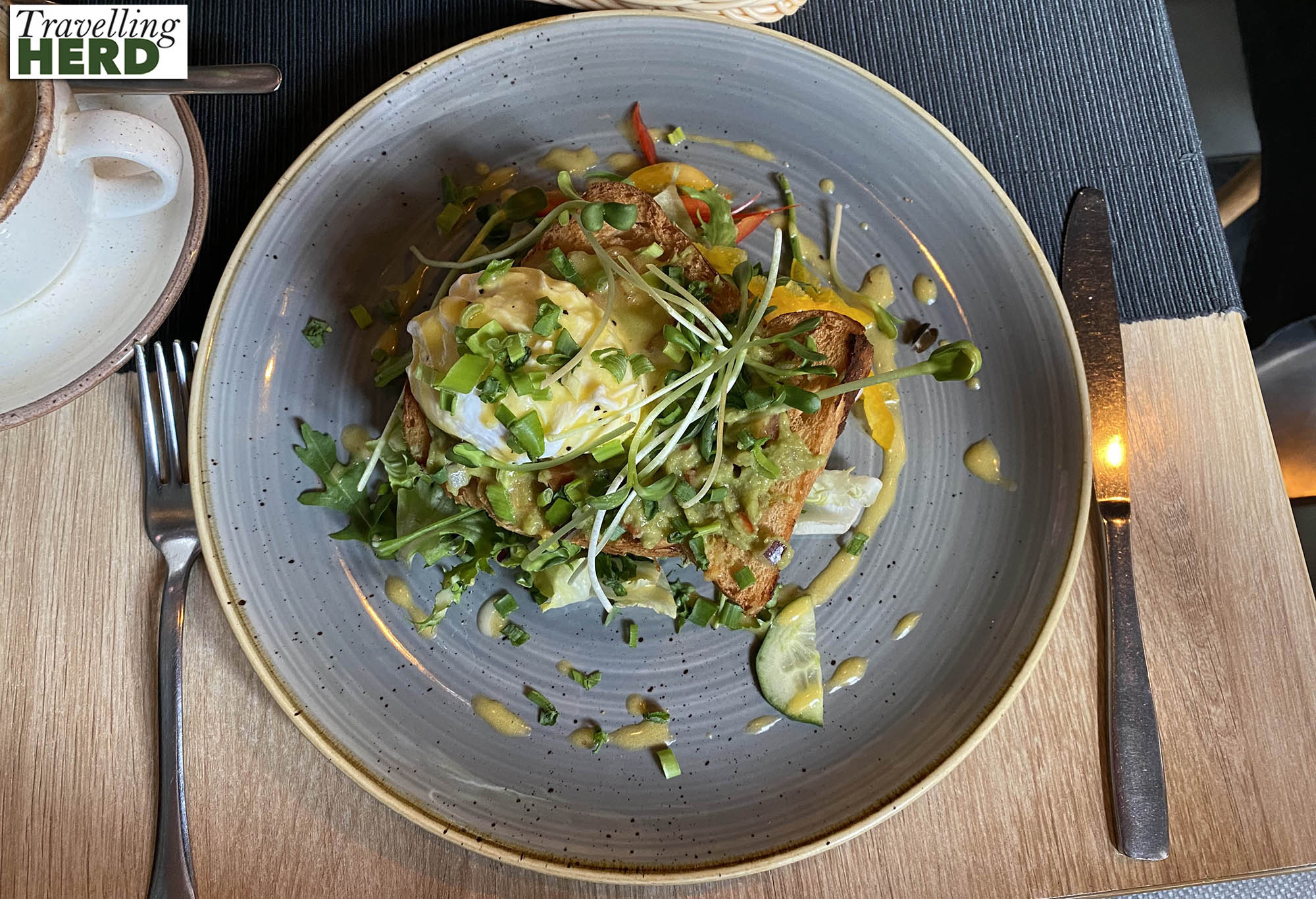
Route Map:
